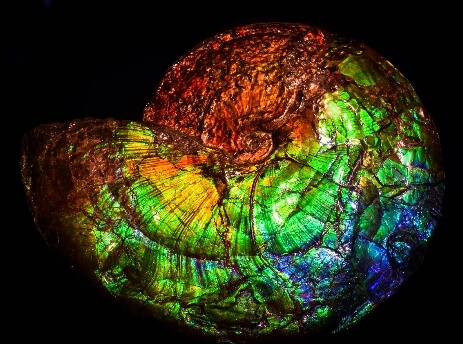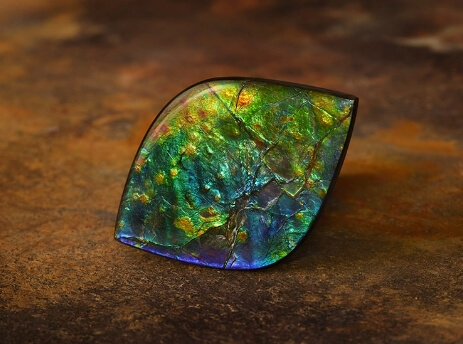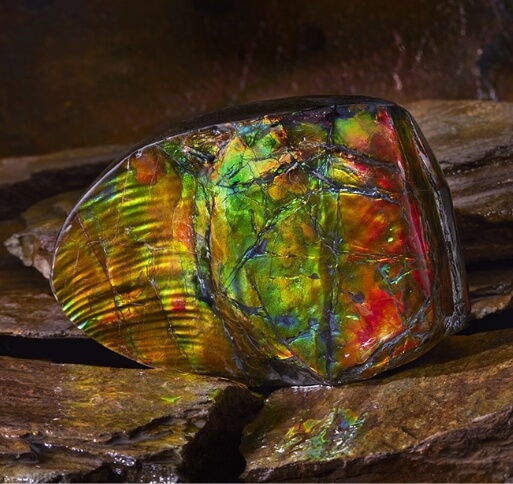Discover the unique history of Ammolite and Ammonite that has changed the landscape of rare and brilliant gemstones. From its raw natural state of discovery to its captivating transformation as premium Iniskim Ammolites, the coloured gemstone has made its mark.
65 million years ago, the last of ammonoids populated the world during the Jurassic and Cretaceous seas worldwide.
The Ammonite has been compared to Nautilus, a distantly related cephalopod, and are recognized as marine mollusks. The shells of Ammonites lived in the inland Western Interior Seaway, now recognized as the eastern slopes of the Rocky Mountains in Southern Alberta.


Extinction at the end of the Cretaceous period saw the fossil ammonoids sinking to the seabed. The mud that covered Ammonites hardened over millions of years to become shale.
Over 71 million years, the Ammonite fossils were preserved through a combination of immense tectonic pressure, mineralization from the soil, heat, and time. The mineral composition of fossilized Ammonite shells consists of hundreds of thin, iridescent layers of minerals.


In 1962, it was first officially recorded that the use of Ammonite shell could be transformed to gem material. Significant deposits of the multi-coloured Ammolites were and are found in the Bearpaw Formation that extends from Alberta to Saskatchewan in Canada and south to Montana.
From coining the term Ammolite to seeing commercial viability over the following years, Rene Vandervalde brought the vibrant gemstone to light in 1980.
Over 30 years, Ammolite has expanded its presence in the gemstone world market, with increased recognition as among one of the rarest gemstones.
It received gemstone designation by CIBJO in 1981, is the last of the gemstones accepted in the past 300 years, and as the provincial gemstone of Alberta, Canada in 2022.

Iniskim proudly presents premium cuts of Ammolite that enhance and showcase the intensity and rarity of colours for the gemstone. Highly sought-after gems that are rare in colour and pattern are those with hues of blues and violets, while red and greens are found more often.




The Blackfoot Tribes of North America first discovered Ammolite, referring to it as “Buffalo Stone” or “Iniskim”. The name signifies wealth and abundance. Folklore tales shared over generations have referred to Ammolite as a sacred stone that was received as a gift from the gods over 1,000 years ago.
We recognize the significance and importance of paying homage to Ammolite’s beginning. Through songs, ceremonies and prayers, the Blackfoot Tribe would create the luck in the hunt and pursuit of the Buffalo.